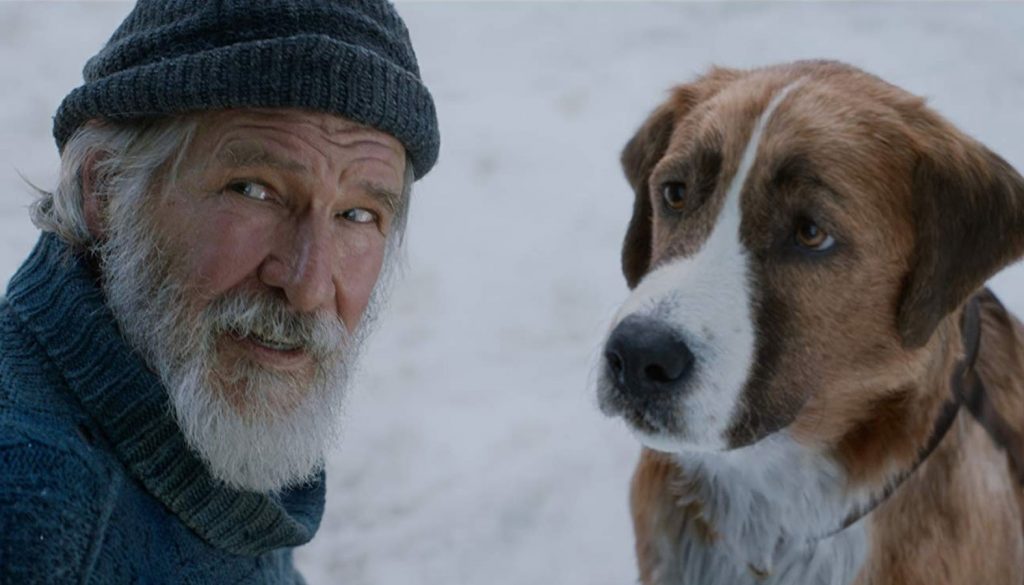In a world of highways, high-speed internet, and Amazon, few things seem as foreign as dogsled package deliveries and prospectors scavenging icy mountains for gold. Yet this was the world of many Americans in the 1890s, when the Klondike Gold Rush drew thousands up north to brave the bitter cold of Yukon, Canada.
It is a world famously captured in Jack London’s 1903 novel “The Call of the Wild,” now retold in 20th Century Fox’s upcoming film starring Harrison Ford.
London’s classic story of a dog’s journey from domestic life to wilderness adventure has been adapted for the screen several times, including a silent film released just 20 years after the book’s publication and a 13-episode TV series in 2000.
These adaptations showcase a wide range of loyalty to the novel’s plot, from chapter-by-chapter accuracy to no more than loose references. In this latest version, director Chris Sanders lands somewhere in the middle of the spectrum: faithful enough to recall a distant past but modified enough for a 2020 family audience.
“The Call of the Wild” follows Buck, a rambunctious St. Bernard-Scotch collie mix who is stolen from his comfortable life in California and sold to a dogsled team in the Yukon. As he passes from owner to owner, from the lively French Canadian dispatchers (Omar Sy and Cara Gee) to the vicious Hal (Dan Stevens) to the gentle John Thornton (Harrison Ford), Buck dives into the adventure of life in the wilderness and forms loyalties with man and beast alike.
While the film is visually breathtaking and enhanced by some character changes, Sanders’ “Call of the Wild” presents a much more sanitized and safe wild than London described. This approach dilutes the story’s original punch, but it also makes the story more amenable to a family audience.
Unlike previous versions, Sanders’ Buck is a CGI creation. Although the animation is impressive, it often makes it difficult to buy into the interaction between the live action humans and a squishy, almost-real-but-not-quite dog. Still, the benefit of the CGI is that it allows the filmmakers to give Buck both credible canine movements and human-like expressions, which together make him an engaging and lovable protagonist.
Throughout the film, viewers also get sweeping shots of snowy mountains, lush valleys, and star-studded skies. These magnificent landscapes (which are especially enjoyable on the big screen) celebrate the pure natural beauty and inspire gratitude for our nation’s national park reservations.
But perhaps there is too much of a national park vibe. The film never really counterbalances the peaceful landscapes with the harshness of nature that spurs a fight to survive, as London’s book recounted. There are a few glimpses of Buck’s struggle: We see him panting with fatigue, shivering with cold, racing an avalanche, and riding a turbulent river. But at any point in his journey, he overcomes these obstacles without much difficulty.
Once again, the animation, though impressive, simply places a cuddly cartoon in a human world and makes it harder to believe CGI Buck’s battles than the stunts of his flesh-and-blood counterparts.
The point is not that the film needed more violence or intensity but that the lack of it fundamentally changes the story. In Sanders’ “Call of the Wild,” Buck’s journey is not about fighting for survival in the cruel wilderness but about running alongside fellow canine and human companions, pushing aside bullies, and discovering a new home.
There are some real benefits to Sanders’ modifications to London’s story. Instead of the quest for gold, John Thornton’s motivation for traveling up north with Buck is to see the land that his son, who died young, had always wanted to see. Meanwhile, their enemies along the way are greedy prospectors, not a savage band of Native Americans.
Although these details mark a significant departure from the reality London described, they add a moral dimension to the story: family matters more than riches, and vice is the chief cause of destruction. These are lessons that, within the context of a lighthearted adventure, make “The Call of the Wild” an uplifting family film.
While Sanders’ retelling of “The Call of the Wild” is anything but the gripping survival story that made London’s novel famous, it is a charming tale that offers beautiful views of nature and sound life lessons. The significant change in tone might disappoint fans of the book, but it is sure to entertain a fun-loving family crowd.
“The Call of the Wild” hit theaters nationwide Feb. 21.

